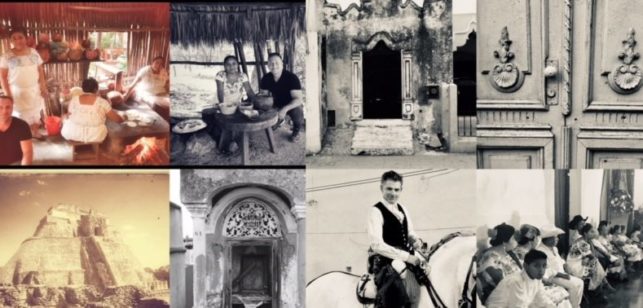
Visiting the past of Mexico while in the present
Visiting the past of Mexico is very easy to do. One of the things that makes Mexico so special is the fact that many traditions are alive and history is preserved. In many rural areas people are still living like people have for centuries with minimal changes. Mexico’s rich history is easy to discover and it is possible for you to be transported back in time to many different settings. Here is your guide to time traveling in the Yucatan Peninsula of Mexico.
If you are coming to the Riviera Maya (in Quintana Roo State) you will notice that it is the more modern side of the peninsula. In Yucatan State you can find cities that are hundreds of years old and more traditional ways of living. This creates a unique juxtaposition between the old and new and is one of the reasons we say it is good to visit the Yucatan.
Note: We took all the photos for this article in the past year and only used some filters to make them appear old.
Travel back in time to the life of the Maya
Many will say the Mayan civilization peaked around 900 A.D. It lasted nearly 2000 years. That is a lot of time to develop a culture and explore the land where you live. Imagine the wisdom of the people and all the things they knew.
You can travel back in time to visit some of the most important religious and ceremonial centers today. Visiting gives you a glimpse of the past of Mexico during the time of the Maya,
If you go with a tour you will no doubt have a guide to help you know details of the life of the Maya and what transpired. If you go by yourself, you can hire licensed guides at the entrances. They can give you good details about the ruins and life.
Visiting Mayan ruins
From the Riviera Maya there are four Mayan ruins that are mainly visited. These are:
- Chichen Itza. This is the most visited ruins in the Yucatan Peninsula. It is largely restored and gives you a good glimpse of the past of Mexico.
- Tulum ruins. Famous for the view overlooking the Caribbean sea, you can really imagine what it was like for the Mayans to arrive by boat to this magical place.
- Coba ruins. These ruins are in the jungle. Walking or biking around here is very cool. You can also climb one of the tallest pyramids and look over the treetops. You can only imagine what people over 1000 years ago must have thought when they looked at the same view.
- Ek Balam. These ruins are smaller then some of the others but still cool to visit and you also can climb them.
One of our favorite ruins is Uxmal which is on the west side of the peninsula (it is pictured below). One of the nice things about Uxmal is the fact that not as many people go here. You can wander around and really feel like you are visiting the past. You can see how they lived and worshipped and can have the quietness to explore and reflect.
For more off the beaten path Mayan ruins, see our guide here.
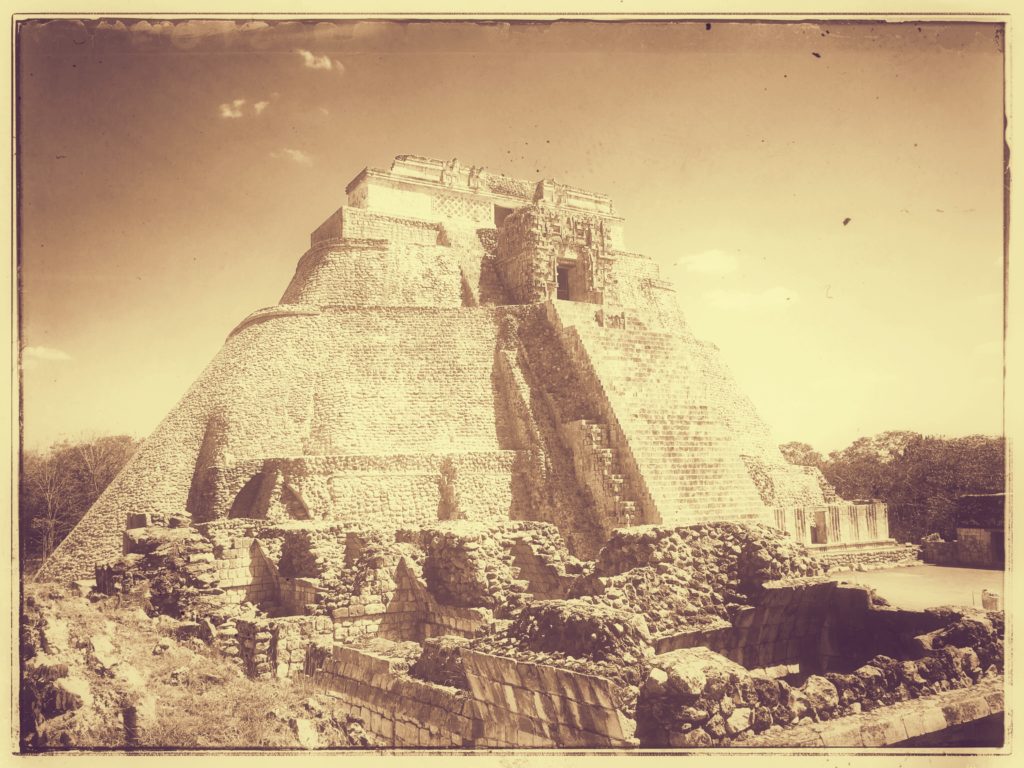
Experiencing Mayan culture today
If you are visiting the Riviera Maya much of the Mayan culture has disappeared but you can get glimpses and experience it. Here are some ways in which you can visit the past of Mexico and experience Mayan culture.
One good tour is going to Coba ruins and visiting a Mayan community. Half you day you spend exploring the Mayan ruins of Coba and the other part having fun and seeing what life is like in a Maya community. See our article and video here about this tour.
If you would like to experience a Mayan temazcal, this tour will take you in the evening. It also includes a swim in a cenote and traditional Mayan dinner. See more about this temazcal tour here in our article.
See also our article about the second Riviera Maya. It is all the things that are just a little further back from the beach. These are more cultural places to visit mostly by renting a car and driving there.
Mayan Houses
Traditional Mayan houses have been used for centuries. They are very practical for this climate and region. See what they look like and how they are built in these two articles.
- See our gallery of traditional Mayan houses here.
- We have a video on how traditional houses are built that you might find interesting.
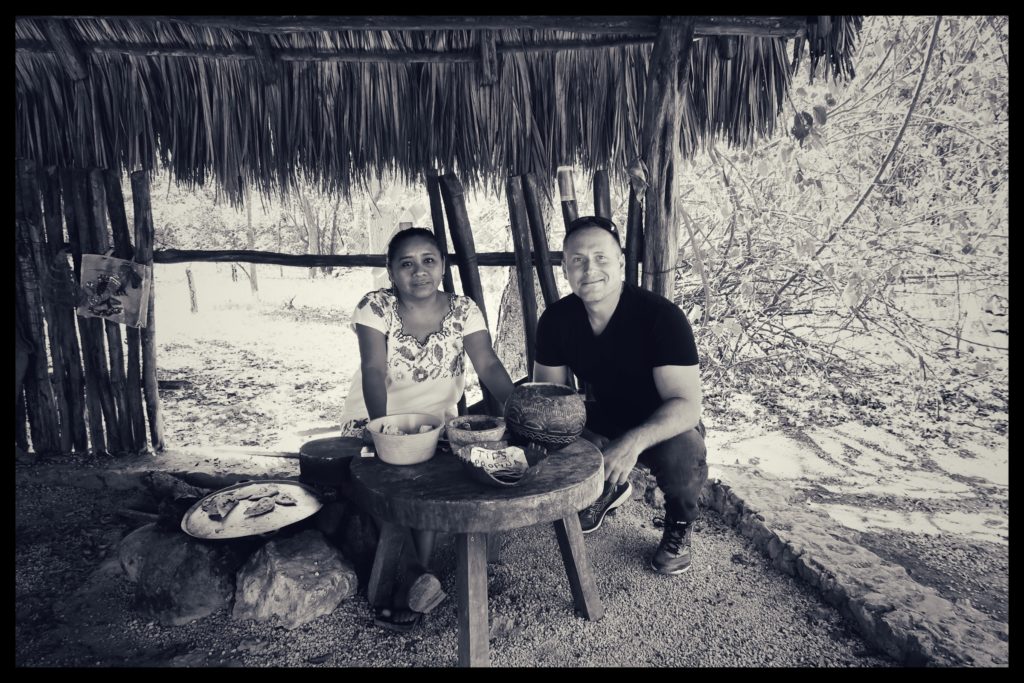
Visit the colonial past of Mexico (1600’s-1800’s)
There are many small towns and a few cities dotting the Yucatan Peninsula you can visit that have colonial architecture. The four largest and most notable are:
Colonial architecture in the Yucatan Peninsula derives most of it’s inspiration from Spain. Many old buildings have high ceilings and decorated facades. Local rock was used to create thick walls that help keep them cool. Tropical hardwoods were used for beams in the ceilings. Interesting fact: most colonial buildings only have rooms about 12 to 15 feet wide. This was because the trees that were used to support the heavy roofs were about that tall.
Many buildings in the above mentioned towns and cities open their doors to tourist. There are public governmental buildings, museums, and hotels all available for you to enjoy the colonial past of Mexico.
In both Valladolid and Merida you can find government buildings houses in colonial buildings open to the public. on the main squares. You can also see murals that depict life in the peninsula from the past.
In Merida stroll on Paseo de Montejo. It is the principal avenue from the past which was lined with huge colonial houses. Most of these were built from money from the haciendas. See the next section about haciendas.
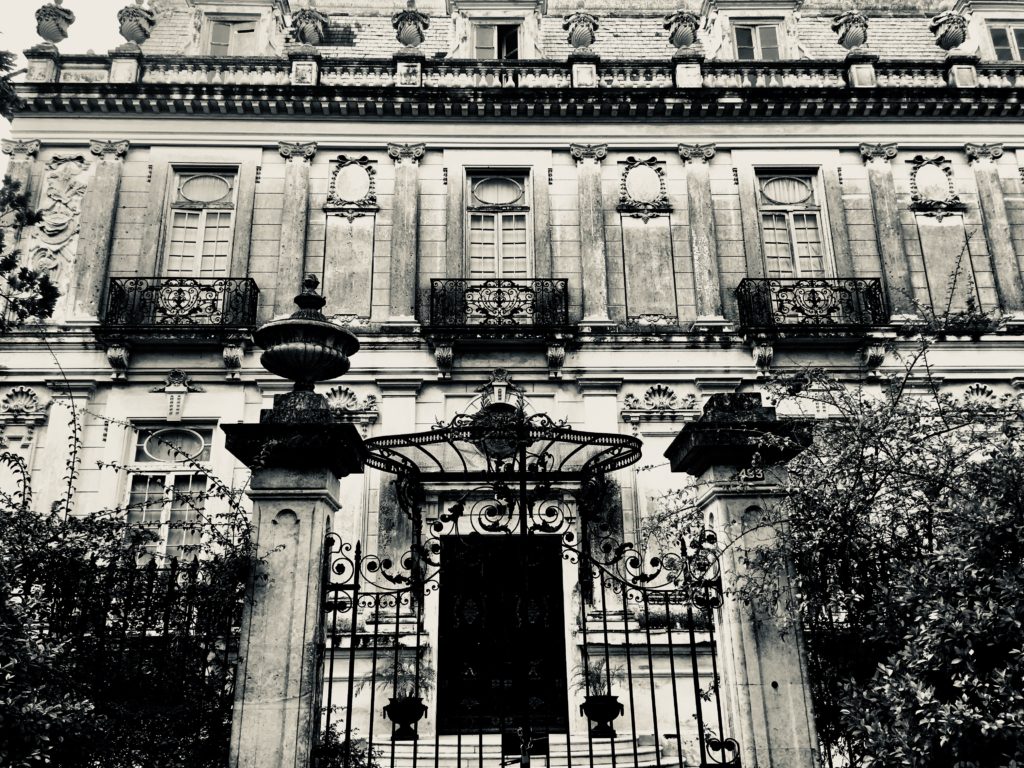
Travel to the time of haciendas (Late 1600’s- early 1900’s)
Haciendas were working estates and practically small towns all to themselves. Haciendas were mainly built around the production of fibers from henequen plants but also sugar cane. During the late 1600’s until the early 1900’s these haciendas hired local labor and created vast wealth for the owners. Entire railroad networks were built to get the products to the ports for exportation.
During the peak of haciendas, they were powerful economic drivers and controlled politics as well in the Yucatan Peninsula. For several hundred years life on the hacienda and the production of henequen was a major influence on culture and life in the Yucatan Peninsula. Two of the most interesting haciendas to visit are Hacienda Sotuta de Peon and Yaxcopoil. See below what you can experience at each one while you travel back in time.
Hacienda Sotuta de Peon
Hacienda Sotuta de Peon is one of the last working haciendas in the Yucatan. Here you can go on a tour to see how the henequen plant is used to make fibers. You will also see the main house and take a horse drawn cart through the beautiful henequen fields.
Also, at Hacienda Sotuta de Peon there is a luxury hotel with small independent cabins you can stay at. It is a great way to transport yourself back in time and enjoy this part of the world.
For more on Hacienda Sotuta de Peon see our article here.
Hacienda Yaxcopoil
Hacienda Yaxcopoil was once considered one of the most important rural estates in the Yucatan. At one time it covered nearly 22,000 acres that were used for cattle and henequen. It rose to its height at the end of the nineteenth century when the henequen industry was booming.
Today you can visit this large hacienda and get a feel for the history. Hacienda Yaxcopoil is a short drive from the city of Merida and near the beginning of the tourist route called the Ruta Puuc. During the day tours are available of this large property. There is also a one room hotel here for guest that really want a unique experience.
For more about visiting and staying at Hacienda Yaxcopoil see our article here.
Enjoy the traditions of Mexico
Mexico has many religious holidays, local traditions and national ones as well. While some festivals and events are newer, many have a history dating back half a century or more.
Revolution Day in Mexico
This holiday falls on November 20th each year. This is a national holiday commemorating the 1910 revolution in Mexico. All over Mexico including Playa Del Carmen you will find parades. Most parades consist of kids dressed up as revolutionary solders and girls in traditional dresses. Below is a photo taken in Playa Del Carmen during the parade.
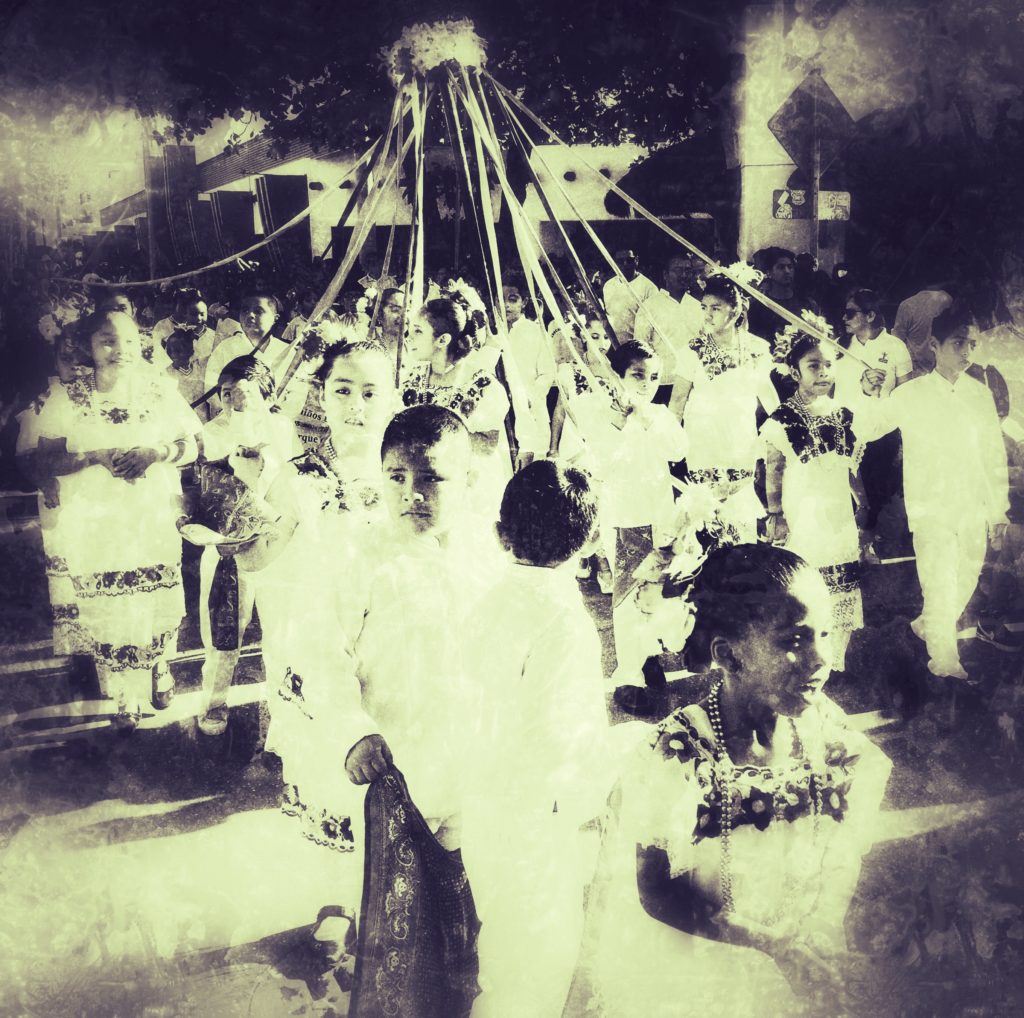
The Espita Fair
Espita is one of the towns in the Yucatan Peninsula that retains many of its authentic traditions. Besides just visiting Espita during the year to see what it is like, visiting during the fair in December will be grand experience. The fair last for 10 days and centers around a three-story corral that is built in town. Here you can visit the past observing traditions like jarana dancing and the celebration of the horse and ranching culture.
Be prepared to be transported back in time to the time when people came together for fairs. It will be like being in the late 1800’s except in living color.
If you go here, are some tips. The fair usually falls from December 19-28th. Most activities happen in the afternoon until late at night. Several of the events go until 4:00am. Since there are only a few basic hotels in the town, it is good to book a place in the surrounding area or plan on visiting for the day. Valladolid, Tizimin and on Airbnb will have places in the area that you can choose from. See our article on Espita for more details.
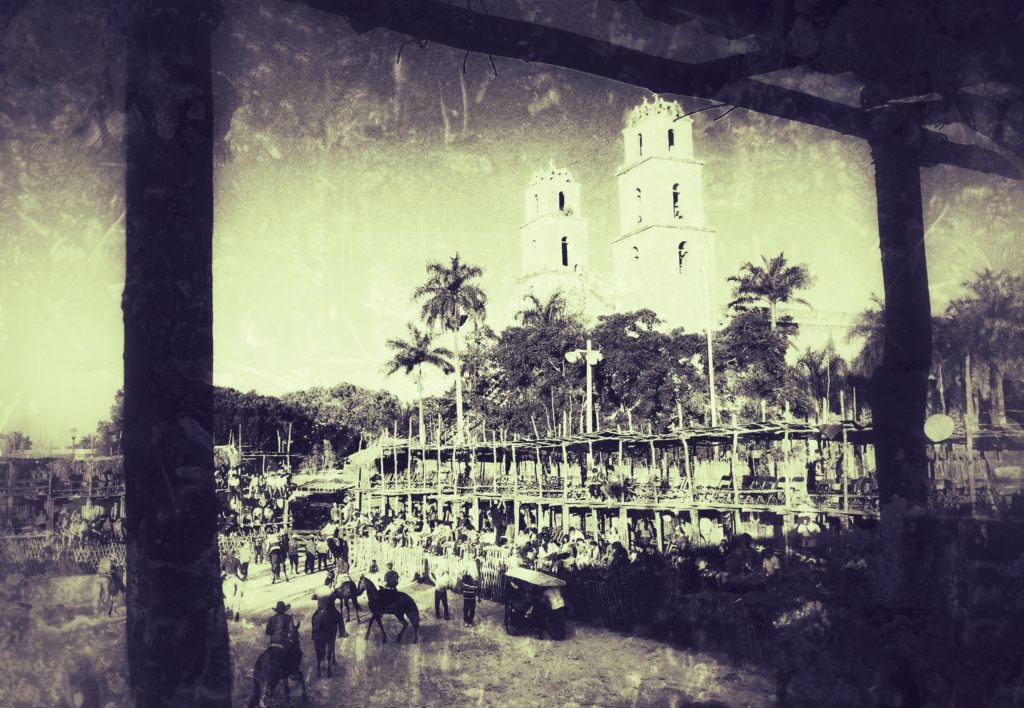
For more holidays and events in Playa Del Carmen see our article here.
Conclusion
Thanks for going time traveling with us in this article. Since many of these things are in Yucatan state side of the peninsula you might like to read our article about visiting the Yucatan.
We hope you get out and enjoy visiting the past of Mexico. Time traveling while on vacation is a great way to be in a different place, both physically but mentally. Mexico offers many hidden treasures and we like helping you find them and helping local communities benefit from tourism.
If you like exploring, see our map below with clickable links to places of interest.


Be the first to comment